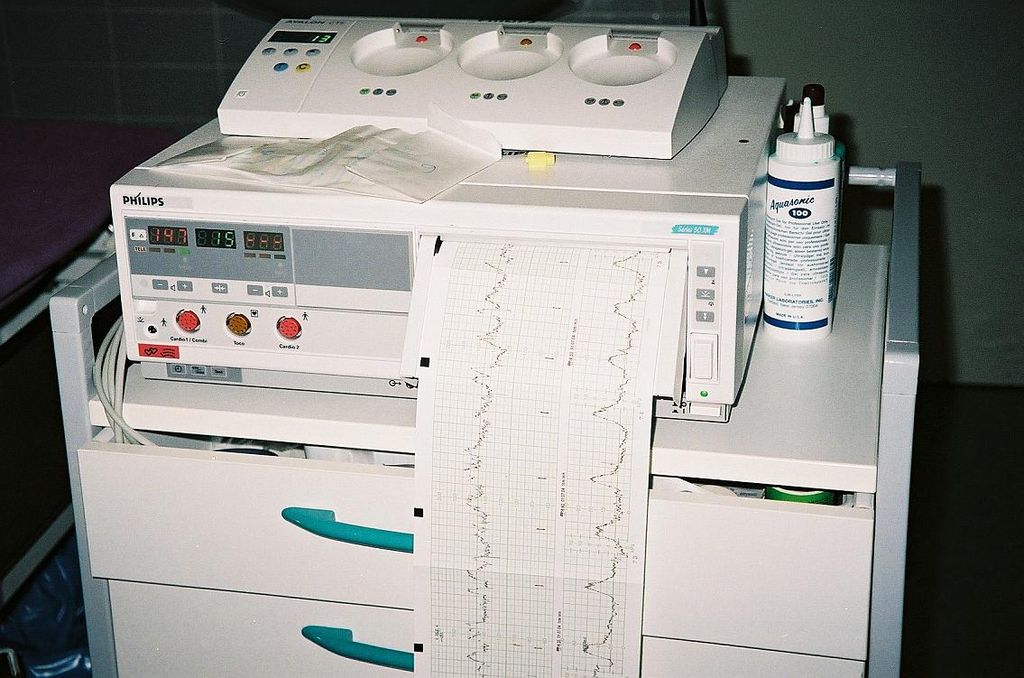
Jeanice Barcelo [2013] OXYTOCIN, HUMAN LOVE, AND HUMAN BONDING by Jeanice Barcelo
Electronic fetal monitor (EFM)
Birth trauma
[Cardiotocography (CTG) is a technical means of recording (-graphy) the fetal heartbeat (cardio-) and the uterine contractions (-toco-) during pregnancy, typically in the third trimester. The machine used to perform the monitoring is called a cardiotocograph, more commonly known as an electronic fetal monitor (EFM).]
[2015 Jan] Why are Medical Professionals who Deliver Babies in Hospitals Choosing to have their Own Babies at Home? Pregnant women who want to avoid surgical birth know they have to avoid the hospital.....“Women are having their bodies completely hijacked,” says Dr. Jennifer Lang, M.D., a 38-year-old board certified ob-gyn based in southern California who specializes in complex gynecologic surgery and has attended over 1,000 births. Although Dr. Lang gave birth to her first child at Cedars-Sinai Medical Center in Los Angeles, California, she chose to have her subsequent children at home.....“After a lot of research and time working in the hospital I realized that I felt safer delivering at home without the time constraints and medical equipment restrictions like continuous fetal monitoring,” Dodge explains in an email. Continuous fetal monitoring, though the norm in most American hospitals, has been repeatedly shown to increase the likelihood of C-section and instrumental birth without improving fetal outcomes. Hospitals in Scandinavia, where the infant and maternal mortality rates are much lower than in the United States, have discontinued its use
[2006] Continuous cardiotocography (CTG) as a form of electronic fetal monitoring (EFM) for fetal assessment during labour. Continuous cardiotocography during labour is associated with a reduction in neonatal seizures, but no significant differences in cerebral palsy, infant mortality or other standard measures of neonatal well-being. However, continuous cardiotocography was associated with an increase in caesarean sections and instrumental vaginal births. The real challenge is how best to convey this uncertainty to women to enable them to make an informed choice without compromising the normality of labour.

Jeanice Barcelo
[2013] OXYTOCIN, HUMAN LOVE, AND HUMAN BONDING by Jeanice Barcelo
